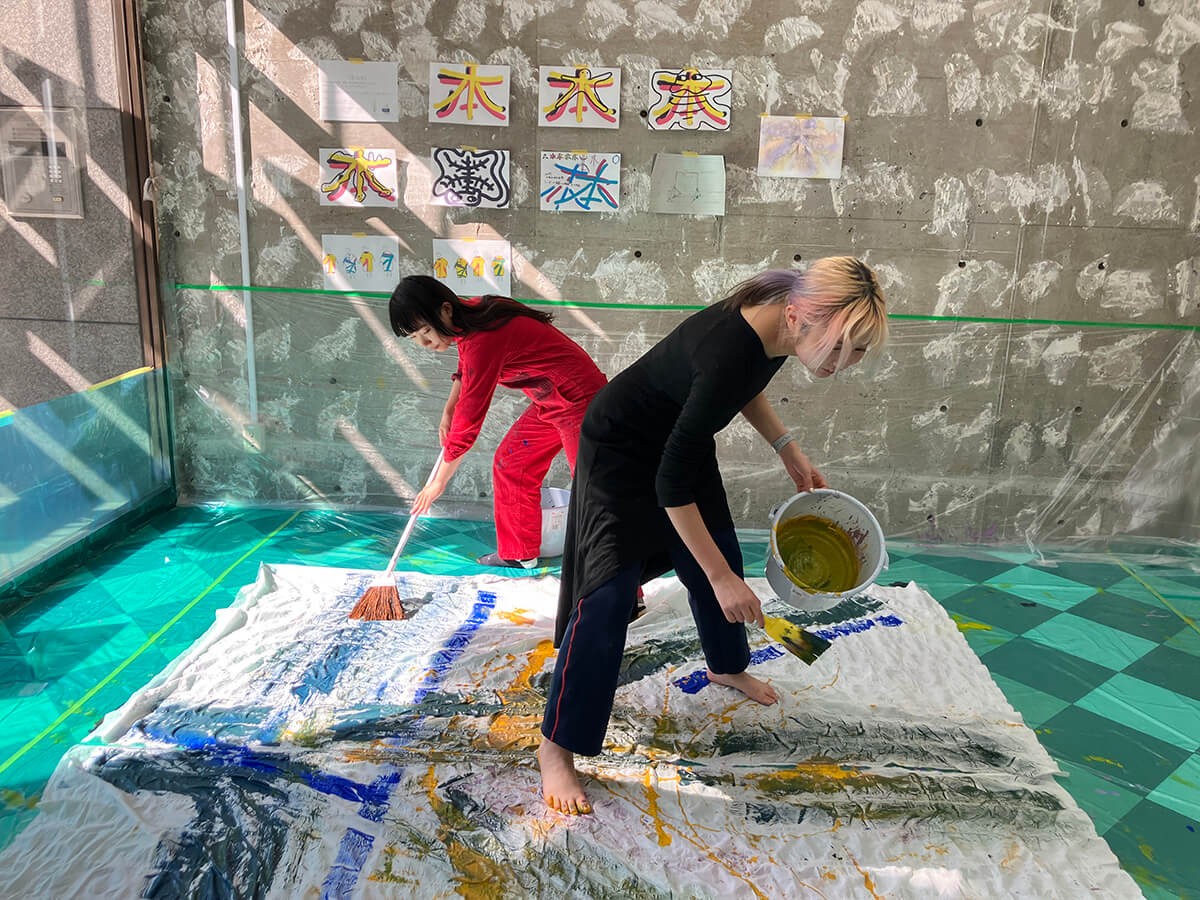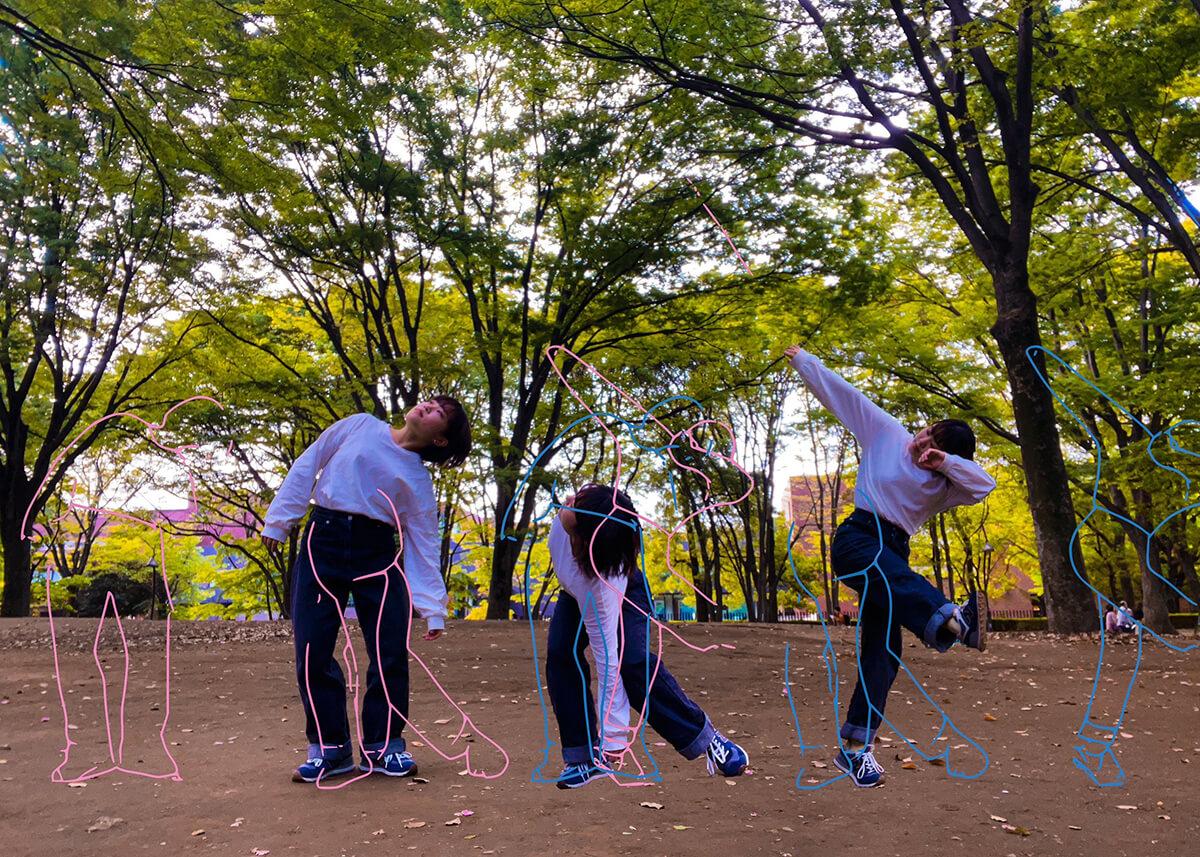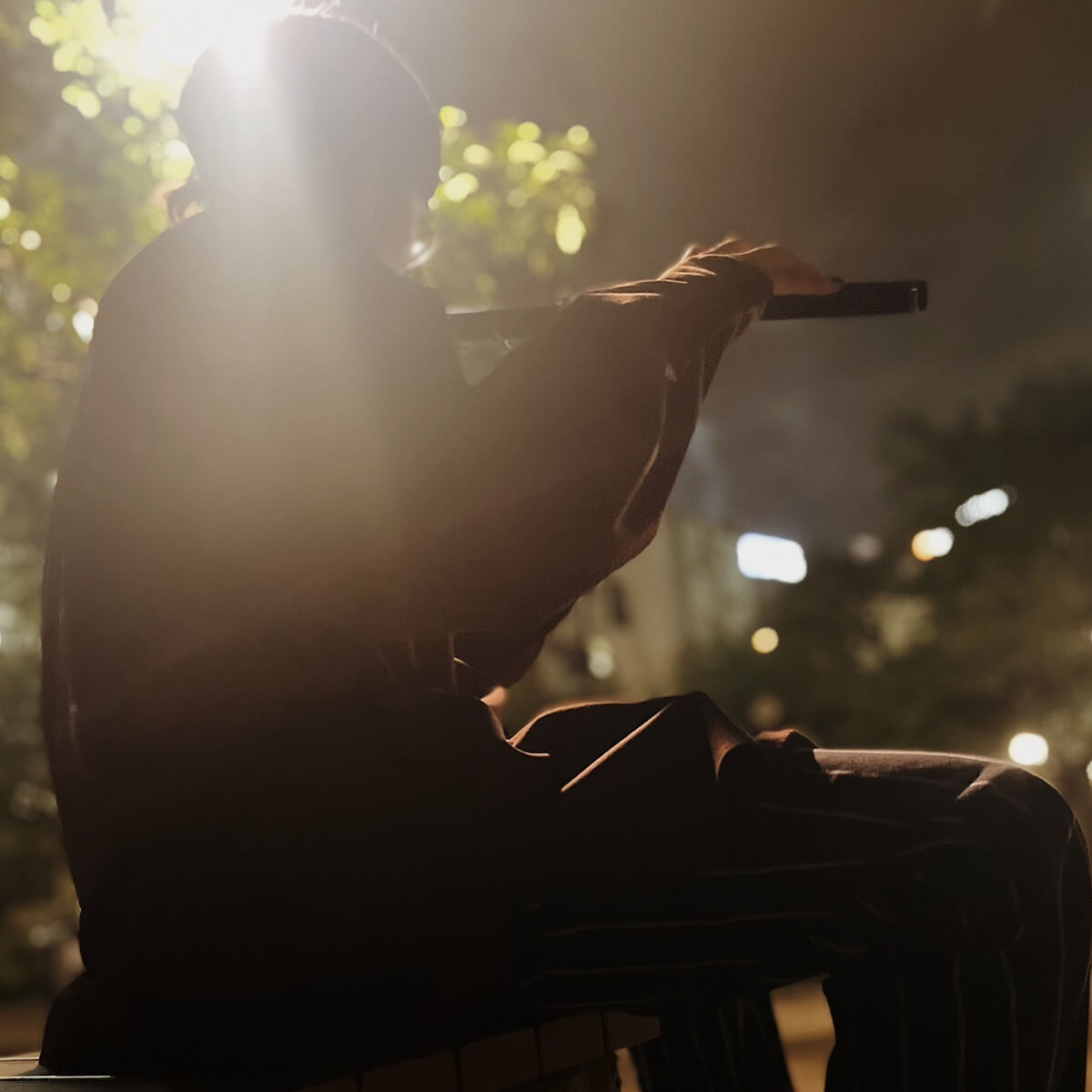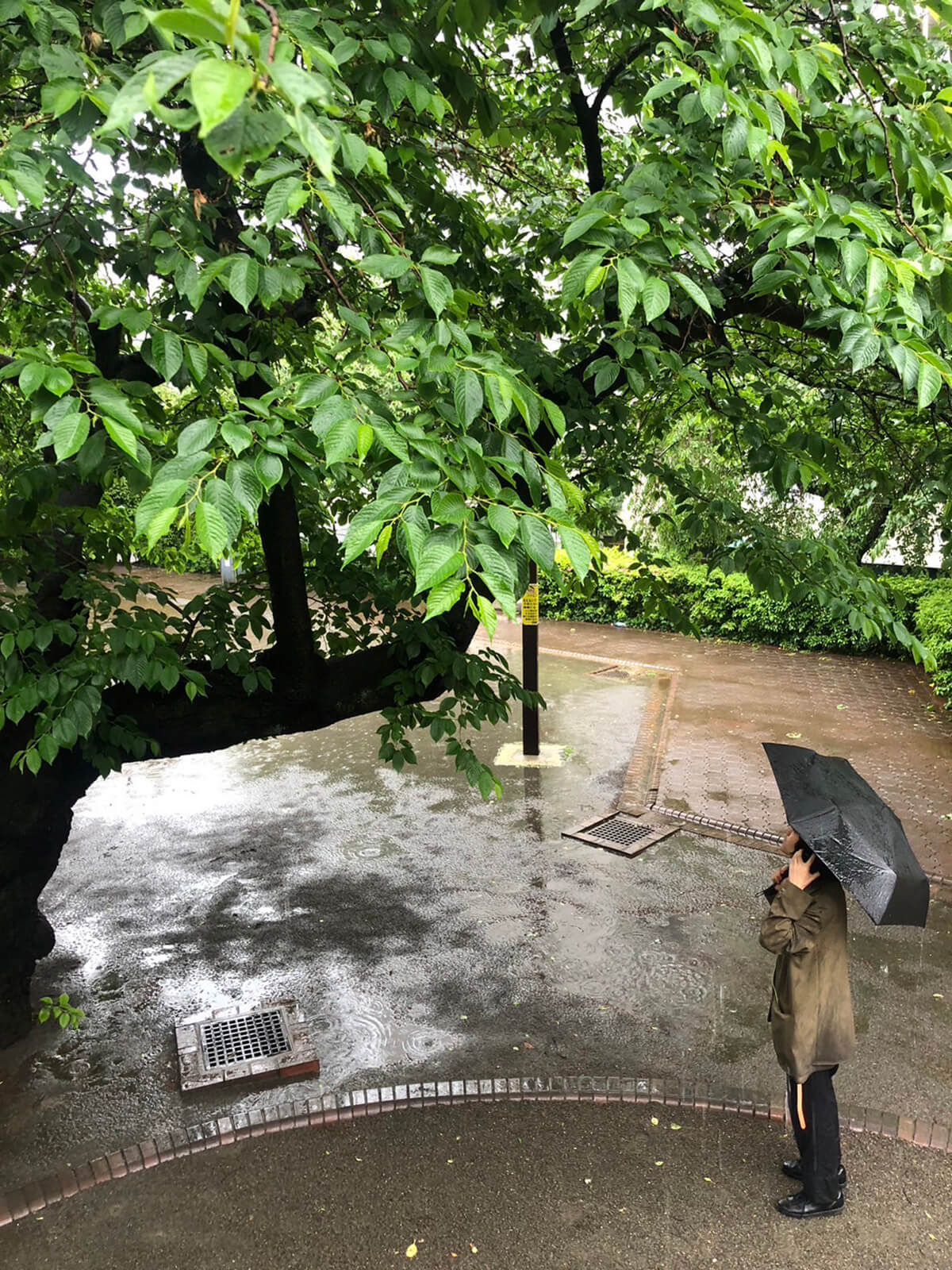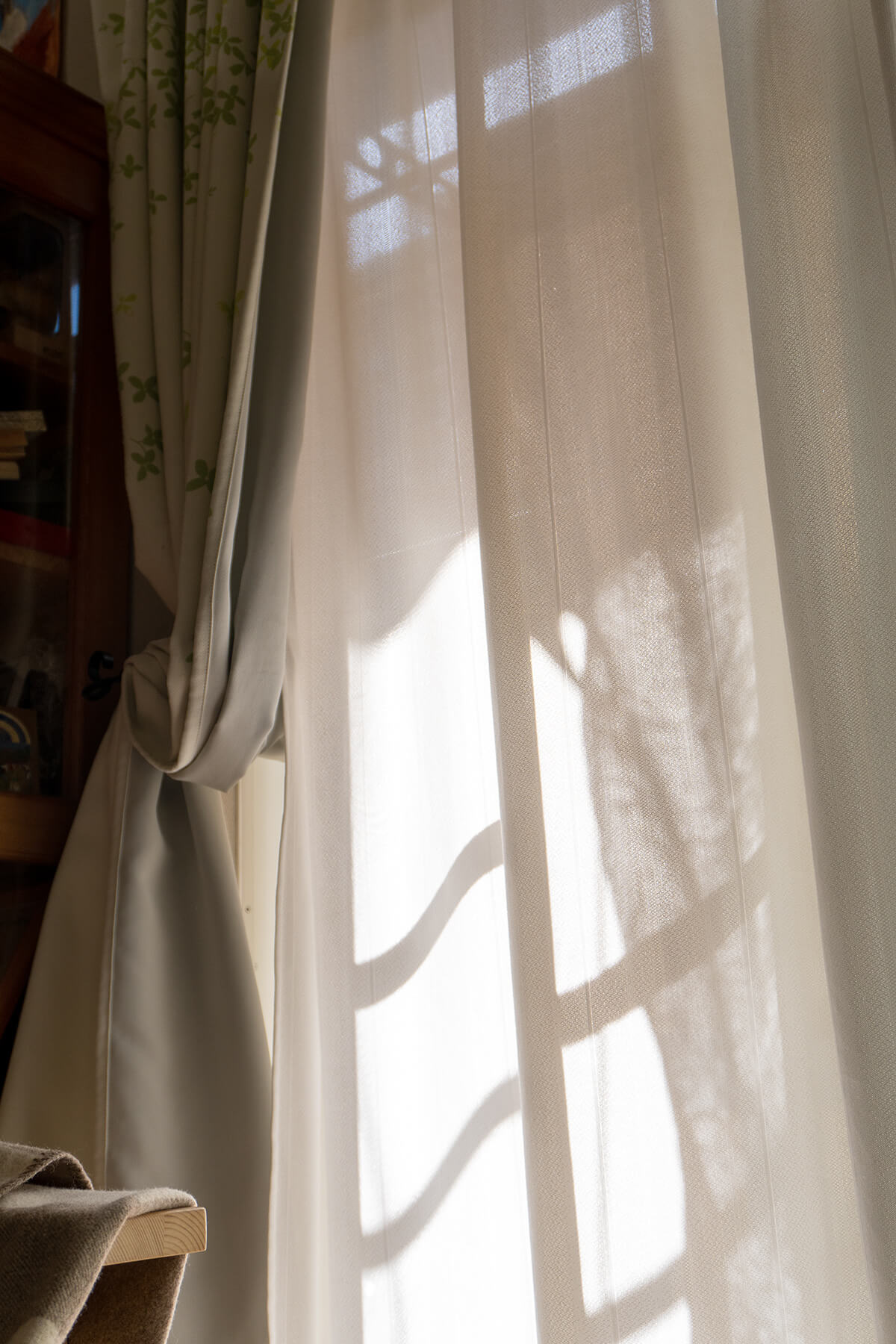T10
Town
Yoshinari Nishio + Students of Tokyo University of the Arts
Alternative 3 Venues : Mikawadai Park
The first photo:
Yoshinari Nishio
One Body: Human House [Skirt], 2014
Installation
view: Roppongi Art Night 2014
Roppongi Hills Arena,
Tokyo
photo: Koji Shimamura
- [Date]
- May 27 (Sat) – 28 (Sun)
- [Place]
- Mikawadai Park
- [Participation fee]
- Free
The first of the three locations is Mikawadai Park. In this program, an environment constructed of clothes will be created, symbolizing the shared space and becoming a place to invite visitors.
Going with the code of curtains
Free from houses and buildings, curtains become themselves.
Curtains become an extension of clothing for architecture. Curtains become agents of cuddly for all forms.
Not as commercial products, but curtains become the essence of the memories they absorbed.
We go along with how curtains live.
People, or curtains, move. People, or curtains, gather at parks.
Curtains, or people, pass through. Curtains, or people, go in and out.
We move toward communal space. We go with the code of curtains.
- - - - - - - - - -
“Curtain Viewpoints”
Yumi Okada (graduate student)
In this workshop, participants are invited to explore moving their bodies within the curtained space to discover how best to enjoy the artworks. Participants will share their interpretations of being inside experiencing art versus viewing it from the outside.
May 27th (Sat): ① 13:30~ ② 14:30~ ③ 15:30~ ④19:00~ ⑤20:00~
May 28th (Sun): ① 11:30~ ② 13:30~ ③ 14:30~ ④16:30~ ⑤17:30~
- - - - - - - - - -
"tradition, variation"
kamijō haruto (undergraduate student)
Using an array of instruments and melodies, inspired by different cultures, the time of day, and shifts in lighting throughout the park, visitors will enjoy dynamic improv musical performances. The improv series draws on musical traditions that have been passed down orally for generations. Variations in performances, fused with sounds emanating from the streets of Roppongi and the atmosphere of the park, will leave listeners with a unique memory of shared space and experience. Performances will vary in length from five to 15 minutes.
- - - - - - - - - -
"Ikizuku (breathing)"
Kani Ningen (former member of Nara Prefectural University’s Yoshinari Nishio academic laboratory)
Cloth flapping in the wind. Footsteps and voices of passersby. The sampling and processing of sounds culled from the streets of Roppongi are played, bringing to life the sounds of breathing creatures that emanate from the curtains at Mikawadai Park. Visitors can immerse themselves in the auditory experience by scanning the displayed QR code with their mobile devices. The listening adventure is both a private and public art experience.
- - - - - - - - - -
Alternative 3 Venues: Mikawadai Park—Going with the Code of Curtains
“Window Stories”
Rin Shimamura (undergraduate student)
Yumi Okada (graduate student)
Midori Miyamori (graduate student)
Kazura Sunamori (research student)
- - - - - - - - - -
“Kasanegi (The Layers of Roppongi)"
Maho Arakawa (graduate student)
Shinku Shirakawa (undergraduate student)
In collaboration with art club students from Roppongi Middle School
“Kasanegi” features colorful curtains with three overlapping Chinese characters—六、本、木—that mean Roppongi when combined. The layered kanji were drawn by various people, helping to convey the rich layers of Roppongi’s geology, architecture, and history. During Art Night, these colorful curtains will be on display at the homes of Roppongi residents who kindly lent their curtains for use in the Window Stories project.
ARTISTS
Yoshinari Nishio + Students at Tokyo University of the Arts
Nishio was born in 1982 in Nara, Japan. He is an artist as well as Associate Professor at the Department of Inter Media Art, Tokyo University of the Arts. He has been developing projects in Japan and abroad that focus on the relationship between the act of dressing and communication. He is the creator of the fashion brand NISHINARI YOSHIO. In recent years, he has been exploring the role of art in society from a practical standpoint through various projects and curatorial work based on the theme of “art as mutual learning.”
